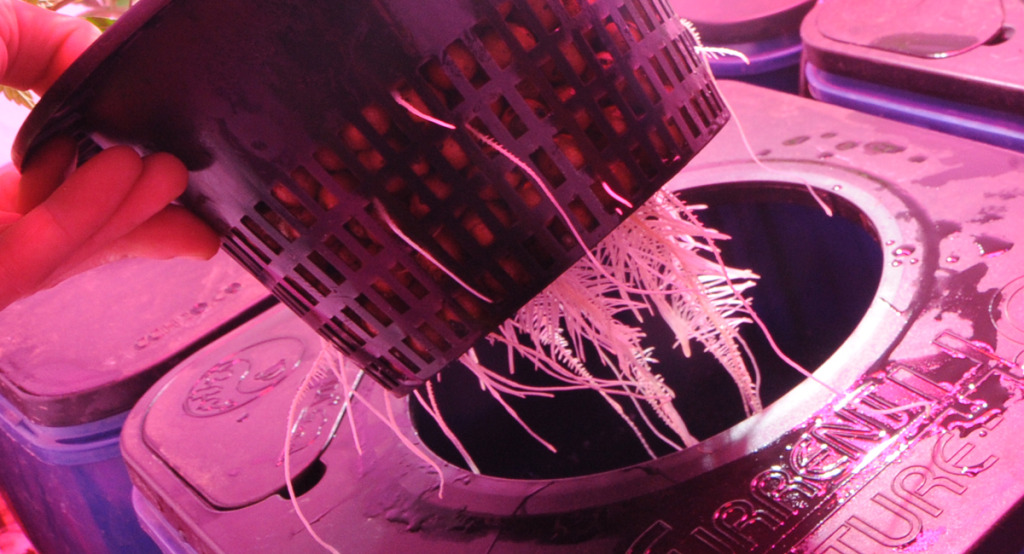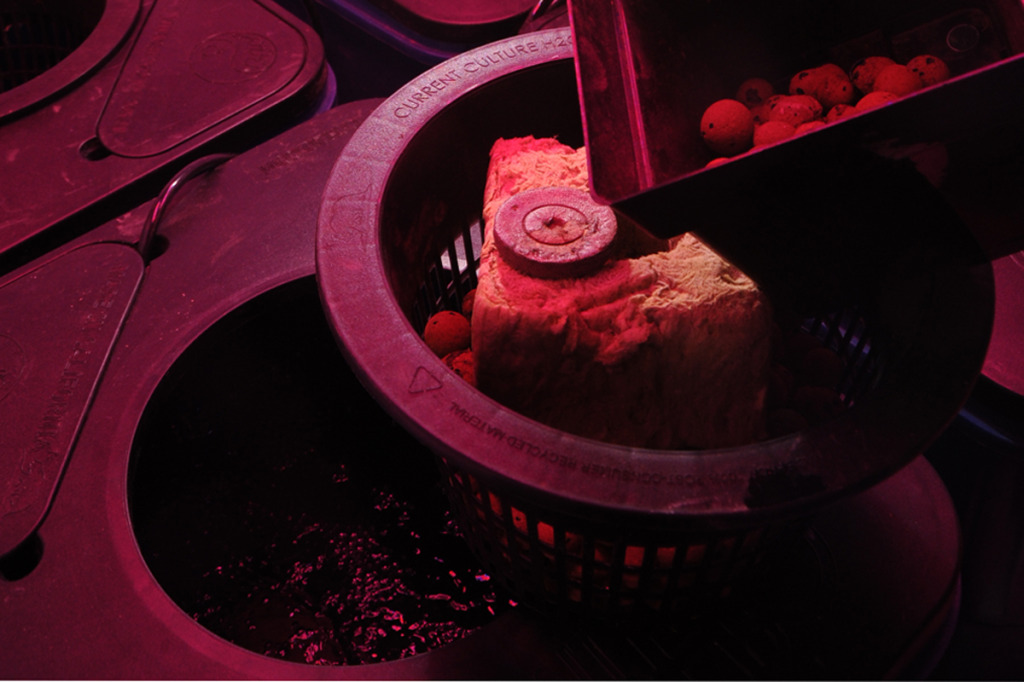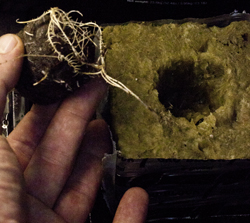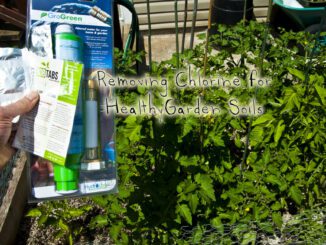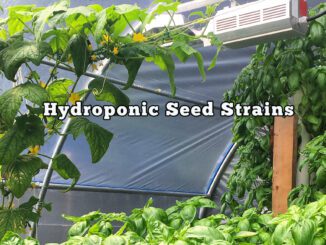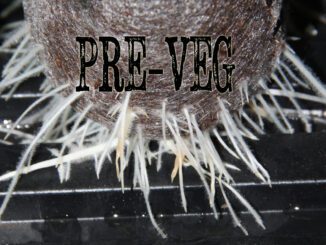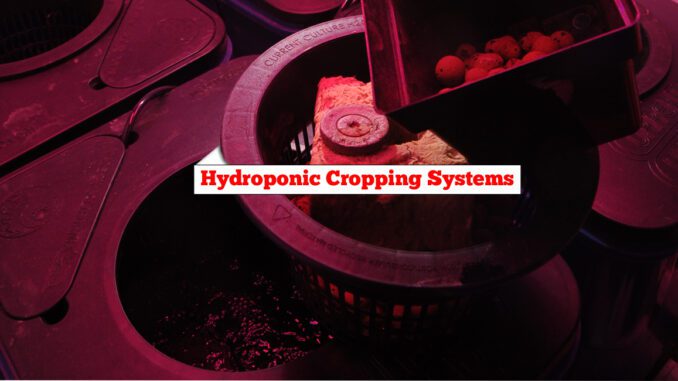
Hydroponic Cropping Systems
Hydroponic Crops Step By Step to Success
Hydroponic Cropping Systems, from Grozine Vol.1 Issue 8
Developing and following hydroponic cropping systems that works for YOU and your PLANTS can be your Ace-In-The-Hole for bigger growing gains. Agriculture is like gambling; it’s always risky-but there are systems that work. Hydroponic cropping Systems allow you to repeat your wins again and again-let’s get started.
The perfect fit means the right spacing and set-up at the right time in the development of a crop
A good cropping system shouldn’t be complicated. Rather, a proven and repeatable recipe for continued growing success. It’s like a good fit; hand in glove. And that’s essentially what we are talking about here-one thing fitting into the next. For our growing context, it relates to our cropping cycle and style:
How big are your plants at harvest, how many of them will occupy a given area, and how long does it take in each phase?
These are the basics, which you should be able to answer before continuing along the chain of thought in developing a system.
Next, either through experience or research, can you identify how big the plants are for upper spacing and root space purposes in each of these distinct grow phases:
i.Pre-Veg: to about 10 days after cuttings root
ii Veg: from just a few days to months. 2 to 3 weeks is average
iii.Pre-Flower: to Harvest: when it comes to feeding, there’s sub phases like early peak and ripening, but for spacing plants should usually be in the final spot they will be harvested from; crops don’t like getting disturbed too much once bloom starts.
Let’s run through an example of a real working hydroponic cropping system model that’s relatively easy to replicate or repeat.
But lets work backwards, shall we?
At harvest, four plants reach maturity in an active-circulation DWC (Deep Water Culture) hydroponics system. This one happens to be a UCXXL by Current Culture. The four plants will finish from 18” to 36” tall, depending on what strain and plant type is grown, amongst other factors.
For an efficient garden under lights, there is little stem or stretch-so a lot of harvestable AAA+ material can be grown from the top of the plant all the way to the bottom. What’s the point of growing it bigger, than pruning the bottom off later anyways?
Especially true in hydroponics.
Just because there is a denser harvest up top; ie more weight in less space doesn’t mean there doesn’t need to be more space at the bottom-or better yet-more efficient use of root space. With a good depth of travel for roots coupled with more efficient uptake of water and minerals via super aeration in the UCXXL, the root system is super-charged to support big yields in less space. The entire system occupies about one square meter for a lineal foot print, and about half a meter for root depth, one meter from plant height, than finally an additional meter for lamp clearance and the overhead crop lighting itself. Nothing that you couldn’t fit into a decent walk-in sized closet-or replicate to the tune of a warehouse-sized installation.
In this particular cropping system, the plants were flipped into the bloom phase just a few days after they were transplanted in to the UCXXL. Doesn’t sound like much time, does it? The plants were already well branched and had a root system developed that was just waiting to explode on transplant. That happened in the stage before: VEG.
You can VEG a plant to a good sized transplant in hydroponics without needing a whole lot of space versus soil gardening methods.
In hydroponics, upper green portions can stay tight and compact, while a substrate like Rockwool can house a strong feeding root system in a relatively small space. The magic of more oxygen and easier nutrient absorption is evident versus soil when you VEG in Hydro.
In this system, the plants are vegged-out in a home-built flood and drain system under MH (metal halide)lighting. A high Kelvin (K) rating looks very “blue” to our eyes, but it encourages very tight and squat growth-perfect for hydroponics! They come in at 6” tall and leave at about 2-3X that. The plants spend 2 to 3 weeks growing in larger sized rockwool cubes and grow rock filled pots after transplant from PRE-VEG
Pre-Veg is an important and often overlooked phase; its when your plants ramp up from recovery/establishment to full on growth. During propagation ie cuttings or seedlings, plants are kept in a tender environment. Pre-veg is a transitional environment with transitional feeding and spacing to get plants ready for “the big world outside”. Outside being out for your covered trays. In this example the plants spend about 10 days getting established into pre-treated rockwool cubes. Spacing is about 6” square per plant
Cuttings get started in good ‘ol Jiffy 7 peat starter pellets in this cropping system. While far from high-tech they have proven to be reliable and are easy to find and usually cheap. The round profile fits perfectly into large-hole sized rockwool cubes. In this phase, a lot of plants can fit snug in a standard 1020 tray.

